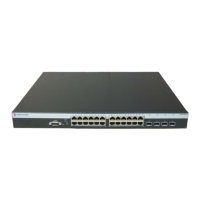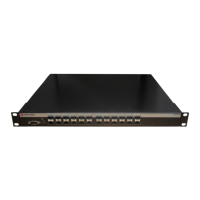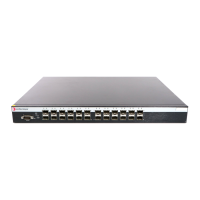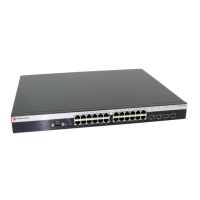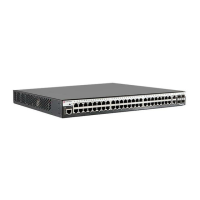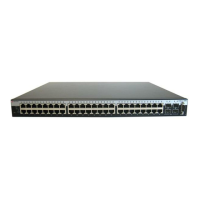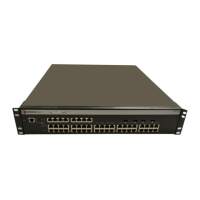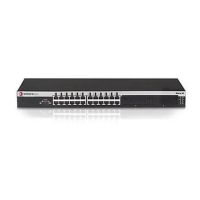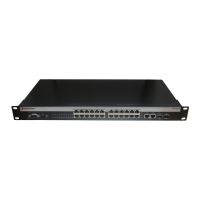Using Multicast in Your Network
Fixed Switch Configuration Guide 19-5
– unsolicited join (sent as a request without receiving an IGMP query first)
In Figure 19-2, this type of exchange occurs between Router 2 and Host 2 when:
(6) Host 2 sends a join message to Router 2.
(7) Router 2 forwards the multicast stream to Host 2.
(8) When it no longer wants to receive the stream, Host 2 can do one of the following:
- Send a leave message to Router 2.
- Time out the IGMP entry by not responding to further queries from Router 2.
Distance Vector Multicast Routing Protocol (DVMRP)
Overview
DVMRP, which is used for routing multicasts within a single, autonomous system, is designed to
be used as an interior gateway protocol (IGP) within a multicast domain. It is a distance-vector
routing protocol that relies on IGMP functionality to provide connectionless datagram delivery to
a group of hosts across a network.
DVMRP routes multicast traffic using a technique known as reverse path forwarding (RPF). When
a router receives IP multicast packets, it first does an RPF check to determine if the packets are
received on the correct interface. If so, the router forwards the packets out to the following:
• Local IGMP receivers for that group on interfaces for which the transmitting router is the
designated forwarder
• Neighbor routers that have indicated their dependence on the transmitting router for
forwarding multicast packets from that source (this is determined during DVMRP Route
Exchange) and from which the transmitting router has not received any prune messages.
If not, the packets are discarded by the router. The transmitting router does not forward the
packets back to the source.
If a router is attached to a set of VLANs that do not want to receive from a particular multicast
group, the router can send a prune message back up the distribution tree to stop subsequent
packets from traveling where there are no members. DVMRP periodically re-floods in order to
reach any new hosts that want to receive from a particular group.
DVMRP routers dynamically discover their neighbors by sending neighbor probe messages
periodically to an IP multicast group address that is reserved for all DVMRP routers.
Key features of DVMRP are the following:
• uses the well-known multicast IP address 224.0.0.4
• uses IGMP to exchange routing datagrams
• does not require an underlying Layer 3 routing protocol to provide a path to remote multicast
destinations
• combines many of the features of the Routing Information Protocol (RIP) with the Truncated
Reverse Path Broadcasting (TRPB) algorithm to route multicast packets between sources and
receivers
DVMRP Support on Enterasys Devices
Note: DVMRP is supported on Enterasys fixed switches on which advanced routing has been
enabled. Refer to “Licensing Advanced Features” on page 4-8 for more information.
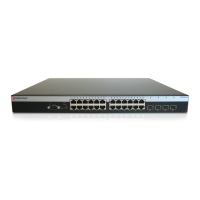
